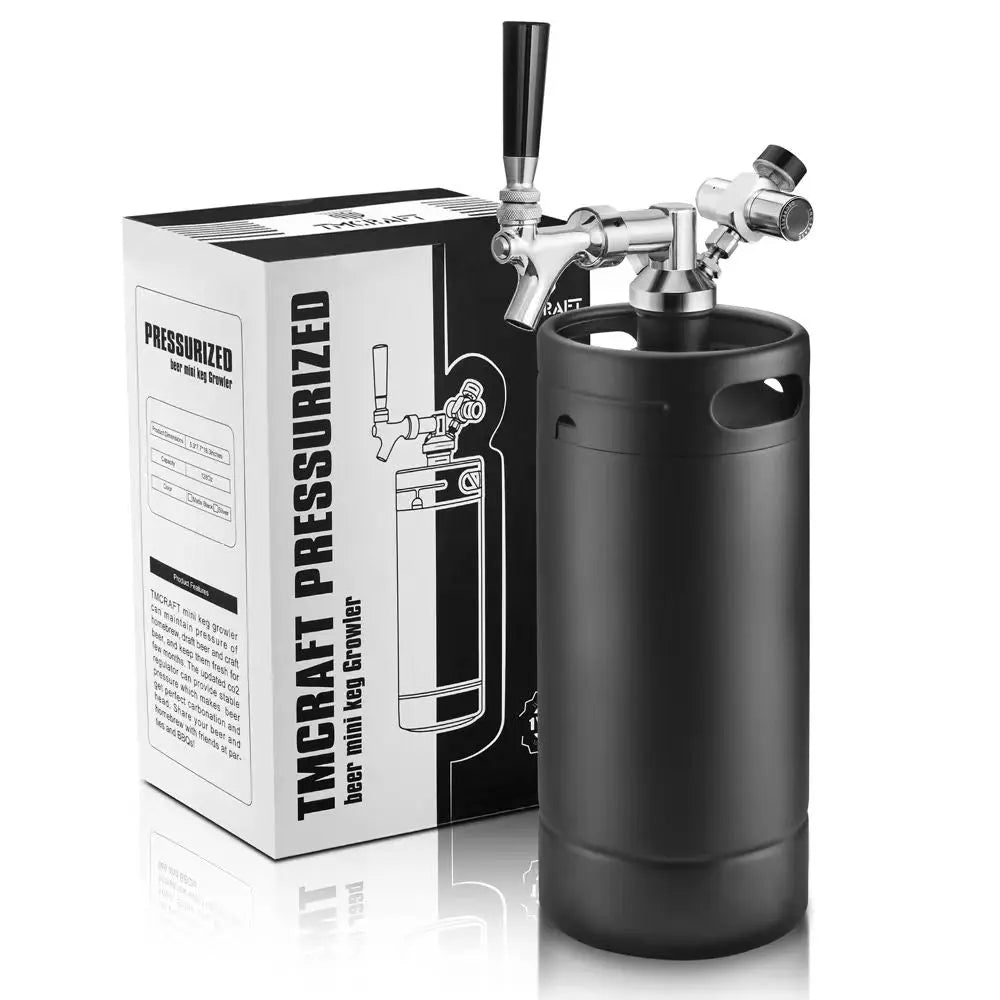
How to Carbonate in a Ball Lock Keg as a Fermenter
Using a ball lock keg as a fermenter and for carbonation is a versatile and efficient choice for homebrewers. It streamlines the process, allowing you to ferment, carbonate, and serve from the same vessel. This method is especially beneficial for small-batch brewers and those seeking minimal oxygen exposure.
Step-by-Step Guide to Carbonate in a Ball Lock Keg
1. Primary Fermentation in the Keg
- Sanitize the keg: Thoroughly clean and sanitize your ball lock keg, including all components like the dip tubes, O-rings, and lid.
- Fill with wort: Transfer the cooled wort into the sanitized keg, leaving 1-2 inches of headspace for krausen.
- Install a blow-off valve: Attach a gas disconnect to the gas post and connect it to a blow-off tube submerged in sanitizer. This setup allows CO2 to escape during fermentation.
- Ferment at the desired temperature: Store the keg in a temperature-controlled environment.
2. Secondary Fermentation (Optional)
- Rack the beer: If desired, transfer the beer to another sanitized ball lock keg for secondary fermentation. This step is useful for clarifying the beer or adding flavoring agents.
3. Carbonation Process
Once fermentation is complete, you can carbonate the beer directly in the keg. Here’s how:
- Remove sediment: If using the same keg for carbonation, purge sediment by disconnecting the liquid post and flushing with CO2.
- Attach a CO2 tank: Connect the CO2 tank to the gas post on the keg.
-
Set the carbonation level:
- For quick carbonation, set the regulator to 30 PSI and roll the keg gently for 5-10 minutes.
- For slow and steady carbonation, set the regulator to 12-15 PSI and leave the keg in a cold environment for 5-7 days.
- Purge oxygen: Vent the keg by pulling the pressure relief valve to remove any oxygen.
- Monitor carbonation: Check carbonation levels periodically by sampling the beer.
4. Serving from the Keg
After achieving the desired carbonation level:
- Reduce the pressure to 10-12 PSI for serving.
- Attach a tap system or dispensing setup to the liquid post.
Advantages of Carbonating in a Ball Lock Keg
- Reduced Oxygen Exposure: The sealed environment minimizes oxidation, preserving beer freshness.
- Convenience: Using one vessel for fermentation and carbonation saves time and reduces cleaning efforts.
- Consistency: Controlled carbonation results in more precise and repeatable outcomes.
- Versatility: Ball lock kegs can also be used for cold crashing, dry hopping, or flavor infusions.
Recommended Ball Lock Kegs
Here are five ball lock kegs to consider for fermenting and carbonating your beer:
-
TMCRAFT 5-Gallon Ball Lock Keg
- Features: Durable stainless steel, pressure-rated for fermentation and carbonation.
- Purchase Here
-
Cornelius Style Keg
- Features: Classic design, easy-to-clean dip tubes, and O-rings.
- Purchase Here
-
Kegco 5-Gallon Homebrew Keg
- Features: NSF-certified, reinforced handles, perfect for homebrewing.
- Purchase Here
-
AMCYL Ball Lock Keg
- Features: High-quality welding, durable rubber handles for easy portability.
- Purchase Here
-
Anvil Bucket Fermenter with Ball Lock Lid
- Features: Multi-purpose fermenter with ball lock lid attachment.
- Purchase Here
By following this guide, you can maximize the utility of your ball lock keg, ensuring a seamless brewing experience with excellent results. Happy brewing! 🍺

